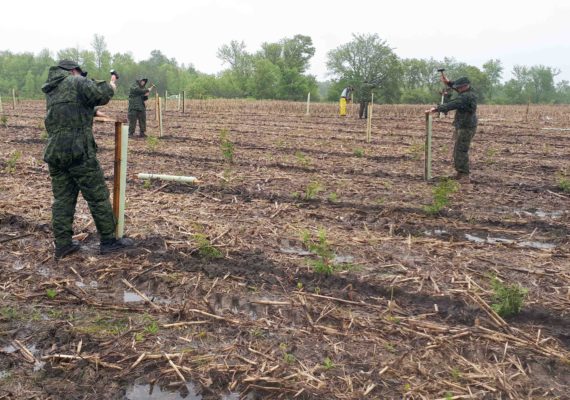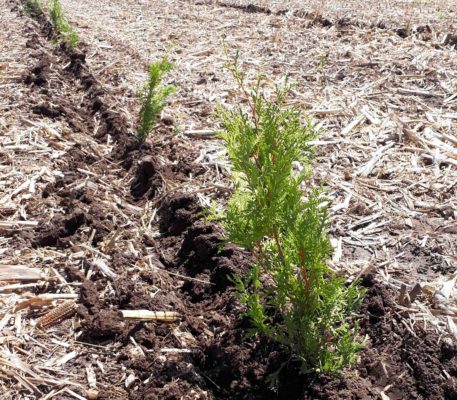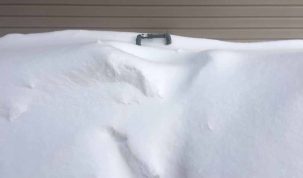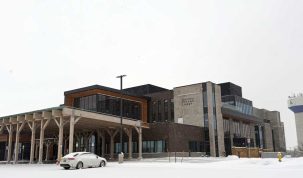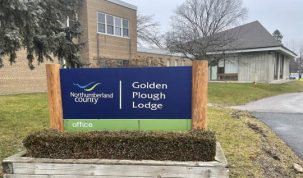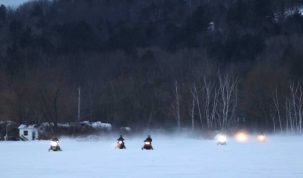Lower Trent Conservation is pleased to announce that the first year of an ambitious three-year natural buffer planting project has been successfully completed at its Murray Marsh Natural Habitat Area.
Thanks to generous funding from Forest Recovery Canada and TD Friends of the Environment Foundation a total of 6,842 trees and shrubs representing 15 native species were planted in 2019.
“Natural buffers protect transition areas around wetlands from agricultural impacts, such as soil erosion and nutrient run off, while also providing wildlife habitat,” says Ecology and Stewardship Specialist Ewa Bednarczuk.
“The Murray Marsh Natural Habitat Area Restoration Project has now established approximately 6 hectares of treed wetland buffer on Lower Trent Conservation owned lands, which helps to safeguard the quality of water in the Trent River waterway.”
In addition to Lower Trent Conservation staff, numerous volunteers including members of the Hasty P’s (Hastings and Prince Edward Regiment) dedicated over 90 hours of their time and energy to assist with the first year of the project.
“Our volunteers have been outstanding,” adds Bednarczuk. “We simply couldn’t have accomplished all that we did this year without them and our generous donors.”
To date, Lower Trent Conservation has received close to $23,000 in grant money to help cover the cost of the project in Year 1.
Lower Trent Conservation is thrilled to report a 95% survival of the planted trees, which include white pine, tamarack, red oak and silver maple, following the first growing season. Plans for Year 2 of the project are well underway with the authority preparing to double the effort in 2020.
Anyone interested in donating to the Murray Marsh Natural Habitat Area Restoration Project or in lending a helping hand with next year’s natural buffer plantings is encouraged to contact Lower Trent Conservation at 613-394-4829 or via email at information@LTC.on.ca.
Images attached: Hasty Ps installing tree shelters; rows of newly planted tree seedlings at Murray Marsh Natural Habitat Area


